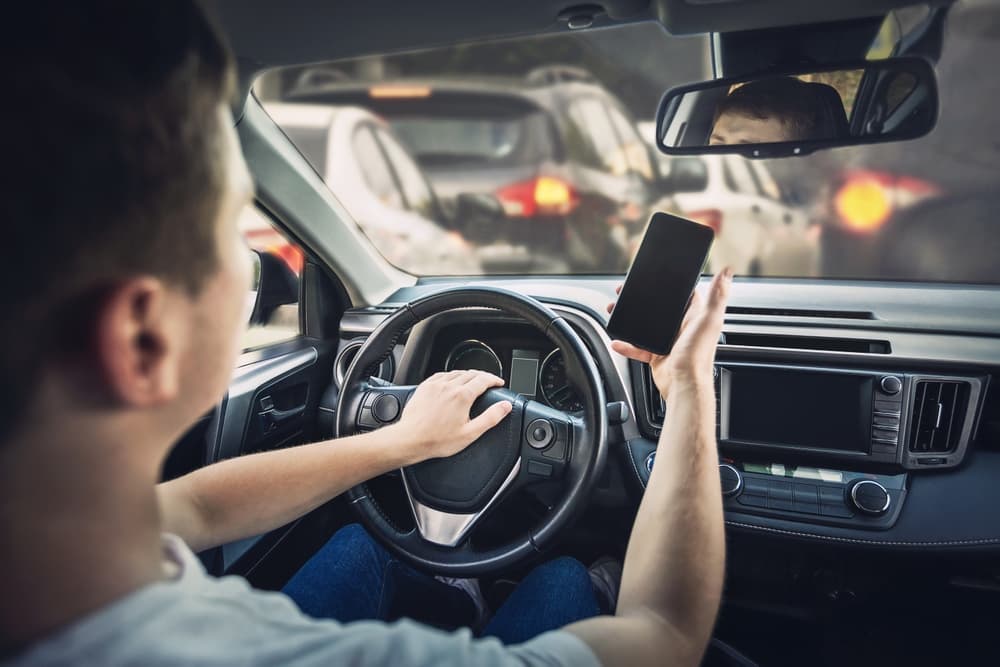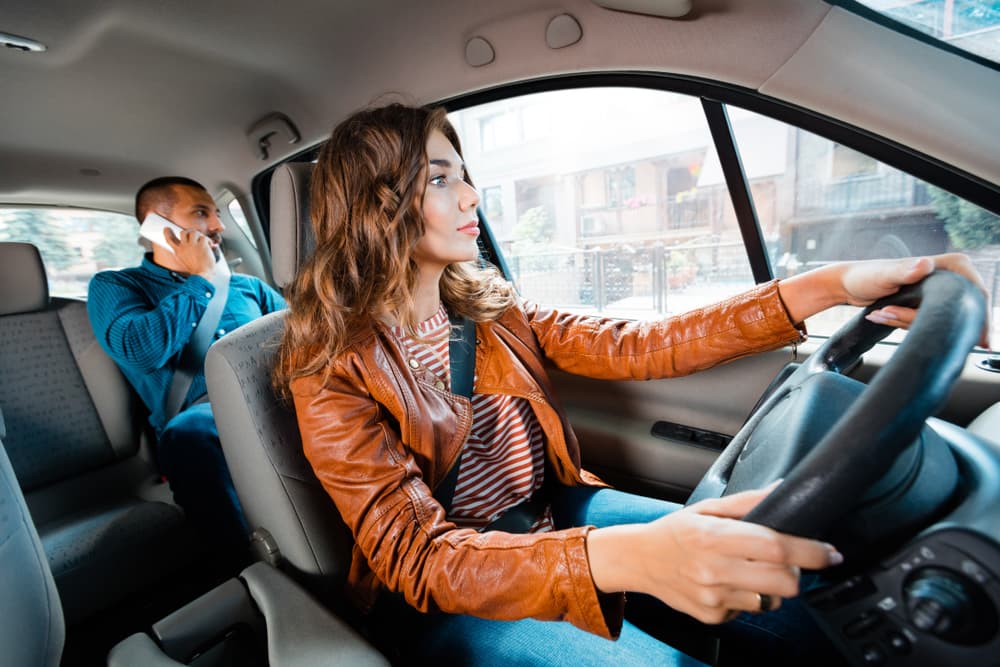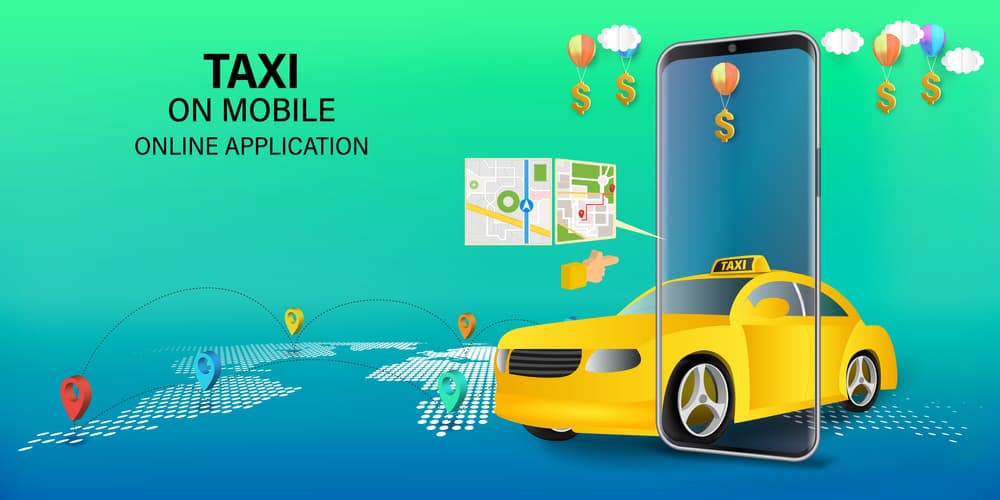Today, more and more people rely on Uber and other ridesharing companies to get around. Locals and visitors alike often request Uber vehicles to get to and from work, meetings, and social venues. However, with the increased number of Uber vehicles on the road comes the probability of serious accidents and injuries involving these vehicles.
In many situations, you can hold an Uber driver directly responsible for an accident due to traffic law violations, distracted driving, or other negligence. At other times, a third-party driver may contribute to an Uber accident.
If you have sustained injuries in a recent Uber accident, it is crucial to have a skilled rideshare accident lawyer by your side throughout your case. A Tampa car accident lawyer specializing in rideshare accidents can promptly investigate your accident, explore your legal options, and pursue a claim or lawsuit to secure the financial compensation necessary for your recovery.
Responsible Parties in an Uber Accident – and How These Accidents Frequently Occur
After an Uber accident, determining responsibility involves scrutinizing several parties. These include the Uber driver, other drivers involved, and sometimes a local government. Accidents may occur for various reasons, such as driver error, negligence, or external factors like road hazards.
First, Uber drivers must ensure the safety of passengers and other road users. They must adhere to traffic laws, drive attentively, and maintain their vehicle properly. If the accident occurs due to Uber drivers' negligence, such as speeding, reckless driving, or driving under the influence, they are typically held accountable.
Other drivers may share in the responsibility for an Uber accident. If another driver violates traffic laws, drives aggressively, or fails to yield the right-of-way, you can hold them liable for the accident. In some cases, multiple parties may share fault for the collision.
Uber’s insurance policy may bear some liability. Uber’s insurance policy covers accidents that occur while a driver is logged into the app and carrying passengers. However, determining liability requires a thorough investigation to see if the driver was actively engaged in a ride or during a period of transition between rides.
Uber accidents can also occur for various reasons. Driver distraction, such as texting while driving – or adjusting a GPS – causes many accidents. Fatigue can also affect a driver’s judgment and reaction time, increasing the risk of collisions. Rain, snow, or fog can also make driving more hazardous and lead to accidents – especially when drivers speed and commit other traffic law violations.
Furthermore, mechanical failures or defects in Uber vehicles can contribute to accidents. Issues such as faulty brakes, tire blowouts, or steering malfunctions can lead to loss of control and collisions.
Overall, determining responsibility in an Uber accident requires evaluating the actions of the Uber driver, other motorists, and Uber (or its insurance carrier). Understanding the factors contributing to accidents can help victims seek compensation from liable parties. An Uber accident lawyer is the best resource you have to identify liability for your injuries.
Common Injuries in Uber Accidents

In an Uber accident that results from negligence, vehicle passengers – and, in some cases, other motorists – can suffer various injuries and medical complications. These injuries can range from minor cuts and bruises to more severe trauma requiring prompt medical attention.
Whiplash is one of the most common injuries in Uber accidents. It occurs when the neck is suddenly jerked backward and then forward, often due to the collision force. Whiplash can result in neck pain, stiffness, headaches, and dizziness, and it may require physical therapy or other treatments to alleviate ongoing symptoms.
Another common injury is soft tissue damage, which includes contusions, strains, and sprains that frequently involve ligaments and muscles. Soft tissue injuries often occur when passengers are thrown around inside the vehicle during a collision or when their bodies absorb the force of the impact.
Rideshare passengers may suffer broken arms, legs, ribs, or other bones. Fractures can require casting, bracing, or even surgery to heal properly.
Head injuries are a significant concern in any motor vehicle accident, including those involving Uber vehicles. Passengers may strike their heads against windows, seats, or other objects inside the vehicle, resulting in concussions, lacerations, or traumatic brain injuries. Head injuries can also have long-lasting effects on cognitive function, behavior, and quality of life.
Cuts and lacerations are common in Uber accidents involving broken glass or sharp objects inside the vehicle. Passengers may sustain cuts to their face, arms, or other body parts, which can vary in severity depending upon the collision circumstances.
Emotional trauma, such as anxiety, post-traumatic stress disorder (PTSD), or depression, can also result from being involved in a traumatic Uber accident. Even if physical injuries are minor, passengers may still experience psychological distress, fear of riding in vehicles, or difficulty returning to normal activities.
Seeking prompt medical attention and legal advice following an Uber accident can help victims recover physically, emotionally, and financially from their injuries.
How to Prove an Uber Accident Claim or Lawsuit

Proving the legal elements of an Uber claim or lawsuit resulting from negligence involves establishing several key factors to demonstrate liability and seek compensation for damages. These elements typically include duty of care, breach of duty, causation, and damages.
First, duty of care refers to the responsibility that Uber and its drivers owe to passengers and other road users to drive safely and responsibly. This duty encompasses following traffic laws, driving attentively, and taking reasonable precautions to prevent accidents.
To establish a breach of duty, accident victims (i.e., plaintiffs) must demonstrate that the Uber driver failed to meet the expected standard of care. This can involve showing evidence of negligent actions, such as speeding, reckless driving, distracted driving, or driving under the influence of alcohol or drugs.
Failure to properly maintain the vehicle or address known safety issues may also constitute a breach of duty.
Causation is another critical element in proving negligence. Plaintiffs must establish that the Uber driver’s breach of duty directly caused the accident and resulting injuries.
This often requires presenting evidence, such as witness testimony, accident reports, expert analysis, and medical records, to demonstrate the link between the Uber driver’s actions and the harm that the plaintiff suffered.
Finally, plaintiffs must prove damages to recover compensation for their losses. Damages can include medical expenses, lost income, pain and suffering, emotional distress, and property damage.
Documenting these damages through medical bills, pay stubs, receipts, and other relevant records is essential to support the claim for compensation.
In Uber claims or lawsuits, proving negligence may involve additional complexities due to the company’s unique business model and insurance coverage. Uber’s insurance policies typically cover accidents while a driver is actively engaged in a ride.
Uber may limit or dispute coverage during other periods, such as when the driver is waiting for a ride request or using the vehicle for personal reasons. Furthermore, Uber’s status as a technology platform connecting independent contractors with passengers can complicate issues of liability and accountability.
Uber will probably argue that it is not directly responsible for the actions of its drivers, or that the driver did not act within the scope of their duties at the time of the collision.
Proving negligence in an Uber accident claim or lawsuit requires thorough investigation, legal experience, and strategic advocacy to achieve a favorable outcome for the injured party.
What Insurance Applies in an Uber Accident?

In an Uber accident, several types of insurance may apply to cover damages and injuries that passengers – and other accident victims – may suffer.
These insurance policies can vary depending on the circumstances of the accident and the driver’s status at the time of the collision.
- First, Uber provides liability insurance coverage for its drivers while they are actively engaged in a ride. This coverage applies when the driver has accepted a ride request and is transporting passengers to their destination. Uber’s liability insurance typically covers bodily injury and property damage resulting from the driver’s negligence up to certain limits.
- Additionally, Uber’s liability insurance may include uninsured/underinsured motorist coverage. This type of coverage protects passengers and drivers if they suffer injuries in an accident caused by a driver who lacks sufficient insurance coverage or is uninsured altogether.
- However, Uber’s insurance coverage may be limited or unavailable during other periods, such as when the driver is waiting for a ride request or using the vehicle for personal reasons. In these situations, the driver’s personal auto insurance policy may apply to cover damages and injuries.
- Some personal auto insurance policies include coverage for ridesharing activities through endorsements or specialized rideshare insurance policies. These policies can provide additional protection for drivers and passengers in an accident, filling gaps in coverage left by Uber’s insurance.
- Furthermore, another driver contributed to the accident, their auto insurance policy may cover damages and injuries. This can include bodily injury liability coverage and property damage liability coverage, which most states require.
- In no-fault states like Florida, passengers may also have auto insurance policies that can cover injuries sustained in an Uber accident. Before they can pursue compensation from the at-fault party, passengers in these states may first need to exhaust their medical payments (MedPay) or personal injury protection (PIP) coverage or meet the state’s serious injury threshold.
- If one of the parties in the accident drove while intoxicated, and a liquor licensee overserved them, you can file a claim with the establishment’s dram shop insurance.
Overall, you need a rideshare accident lawyer to determine which types of insurance apply in an Uber accident. They’ll need to explore the Uber driver’s status at the time of the collision, state insurance regulations, and the specific terms of insurance policies involved.
Seek legal advice from an experienced attorney to understand your rights and options for pursuing compensation after an Uber accident.
Recovering Compensation for Injuries in an Uber Accident
Injured passengers (and other accident victims) may recover damages following an Uber accident due to negligence. These damages help to restore the victim to their position before the accident occurred – both financially and physically.
First, victims can seek compensation for medical expenses. This includes the costs associated with medical treatment, such as hospital bills, doctor visits, surgery, medication, rehabilitation, and physical therapy. Victims may also seek compensation for future medical expenses if they require ongoing treatment due to their injuries.
Lost income and earning capacity are other categories of damages injured accident victims may recover. If certain injuries prevent the victim from working for a while – or result in a permanent disability that affects their ability to work – they may recover compensation for their lost income and the reduction in their earning capacity.
On the other hand, pain and suffering damages are necessary to compensate victims for the physical pain, emotional distress, and mental anguish they experience as a result of the accident and their injuries.
This subjective damage can vary depending on the severity of the victim’s injuries, the effects on their overall quality of life, and the total duration of their recovery.
In cases involving extremely malicious or egregious actions, victims may recover punitive damages. Unlike compensatory damages, which compensate the injured party for their losses, punitive damages punish the at-fault party for their negligent or reckless conduct and deter similar behavior.
An experienced attorney can help victims understand their rights and pursue full compensation for their injuries and losses.
Call an Experienced Uber Accident Lawyer Today

If you recently suffered injuries in an Uber accident that resulted from the Uber driver’s negligence – or someone else’s negligence – you may recover compensation.
A knowledgeable personal injury lawyer in your area can review your accident circumstances and determine the likely value of your case. Your lawyer can then handle all of the necessary steps on your behalf and work to maximize your overall compensation award.